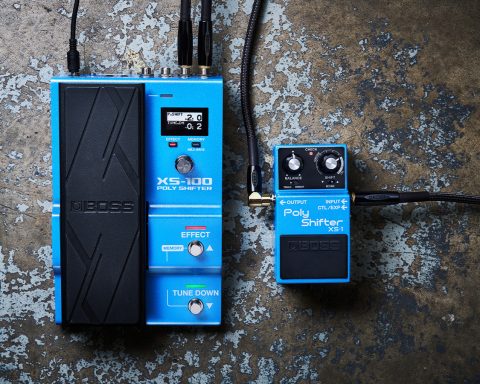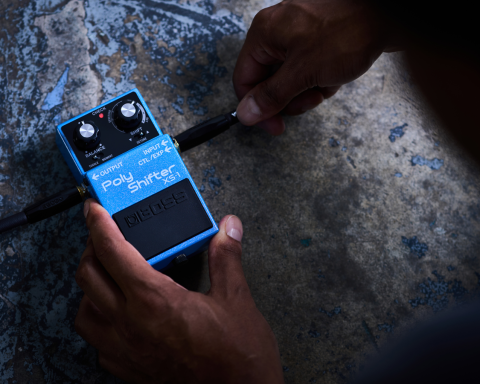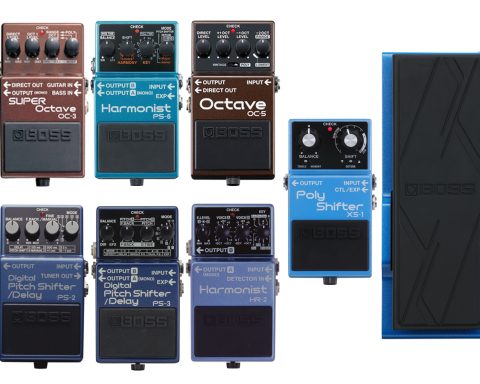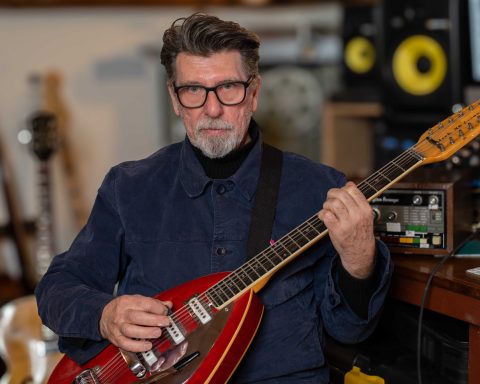Hailing from Preston in northwest England, Richard Pratt has lent his rare technical expertise to some of the country’s top performers. His 20-plus years at the cutting edge of live music have seen him work with a medley of high-caliber acts, including RAYE, Biffy Clyro, Kasabian, Oceansize, Cat Burns, Sugababes, Stormzy, and Dave. In recent times, Richard has worked on shows for chart-topping UK grime artist Stormzy and award-winning British rapper Dave. This summer, he is heading out on tour with The Prodigy.
Rock, dance, rap, or pop—no gig is too challenging, and BOSS pedals are usually somewhere on stage. A self-confessed pedalhead, when Pratt is not on tour, he’s likely at home, soldering iron in hand, building stompboxes. In true boutique style, he makes small, highly collectible batches of pedals as Gone Fishing Effects. His handmade designs include rare signature models for the likes of Kasabian’s Sergio Pizzorno and Biffy Clyro’s Simon Neil.

The Touring Bug
So where did you career as a guitar tech begin?
In the late ’90s/early ’00s, my sister’s band, Fi-Lo Radio, had a bit of a buzz about them, and I insisted I tag along on tour, drive the van, and work the merch stand. Fi-Lo Radio was supporting Oceansize on a UK tour, and after that, I went on the road with Oceansize around Europe. They supported Biffy Clyro, and I just pestered Biffy into giving me a job until they finally relented.
"My sister’s band, Fi-Lo Radio, had a bit of a buzz about them, and I insisted I tag along on tour, drive the van, and work the merch stand."
Stormzy Weather
Which BOSS pedals are on Stormzy bassist Levi Yarde’s pedalboard?
Levi’s pedalboard is all BOSS. He uses an OC-5 Octave, BB-1X Bass Driver, BC-1X Bass Comp, NS-2 Noise Suppressor, LS-2 Line Selector, TU-3W Chromatic Tuner, and MS-3 Multi Effects Switcher. It’s straightforward, and Levi knows it’s going to work every time. He used it for three consecutive nights at The O2 arena recently. The Sugababes bassist, Arran Powell, has almost exactly the same pedalboard.
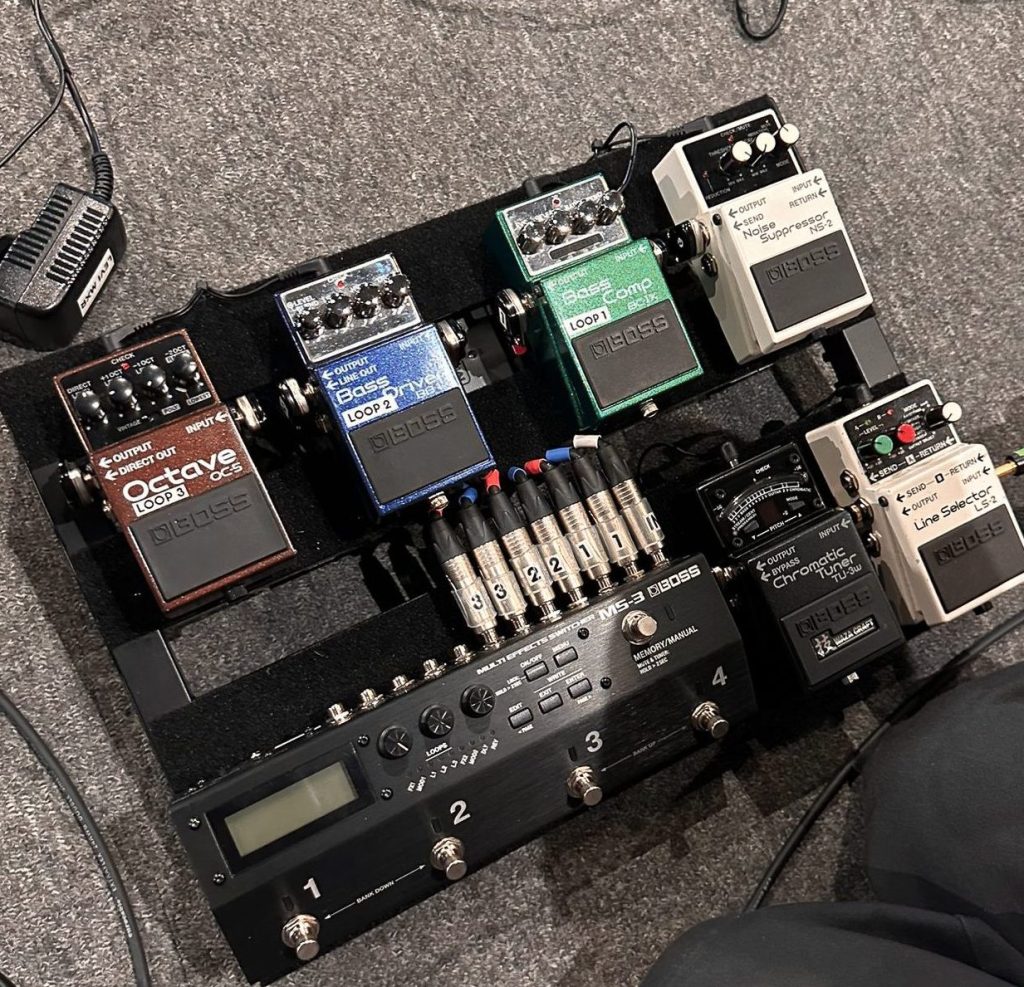
"With The Prodigy, we still use the DD-20 Giga Delay from the Twin Pedal series. It’s the same one Rob’s used for years and years."
Prodigous Pedals
Which BOSS pedals feature on The Prodigy guitarist Rob Holliday’s pedalboard?
With The Prodigy, we still use the DD-20 Giga Delay from the Twin Pedal series. We can’t get away from the DD-20. It’s the same one Rob’s used for years and years, and he knows it just works. It’s got a really long delay and onboard memory. I like it because you can dial in the BPM. And with The Prodigy, the BPM is always going to be the same. This pedal never fails.
Rob also uses a BOSS NS-1X Noise Suppressor. That’s ace. It’s so fast. You can’t hear it closing. It’s great for chugging guitar sounds. You don’t get any feedback, let alone electromagnetic interference. It’s a very simple guitar rig.
"The BOSS NS-1X Noise Suppressor is great for chugging guitar sounds. You don’t get any feedback, let alone electromagnetic interference."
Dime It
How have you seen BOSS pedals used in the studio?
The beauty of being in the studio is you can crank it. Rich Costey would say “dime it,” meaning everything on the amp and pedal maxed to ten, just to see what it sounds like. It can sound incredible cranking things up, which you would never do at home or at a gig.
What BOSS gear features on your personal pedalboard?
I don’t have a pedalboard; I have a pedal-shelf! It’s a bookcase with all my pedals lined up so I can grab them when inspiration strikes and experiment. I’ve got the BOSS Waza Craft HM-2W Heavy Metal, the 30th Anniversary Metal Zone, and every one of the Digital Delay compact pedals from the DD-3 onwards.
The Digital Delays all do something slightly different. My favorite is the DD-6. It’s the one Simon Neil got addicted to—particularly the Hold function. We would use that to mask guitar changes between songs.

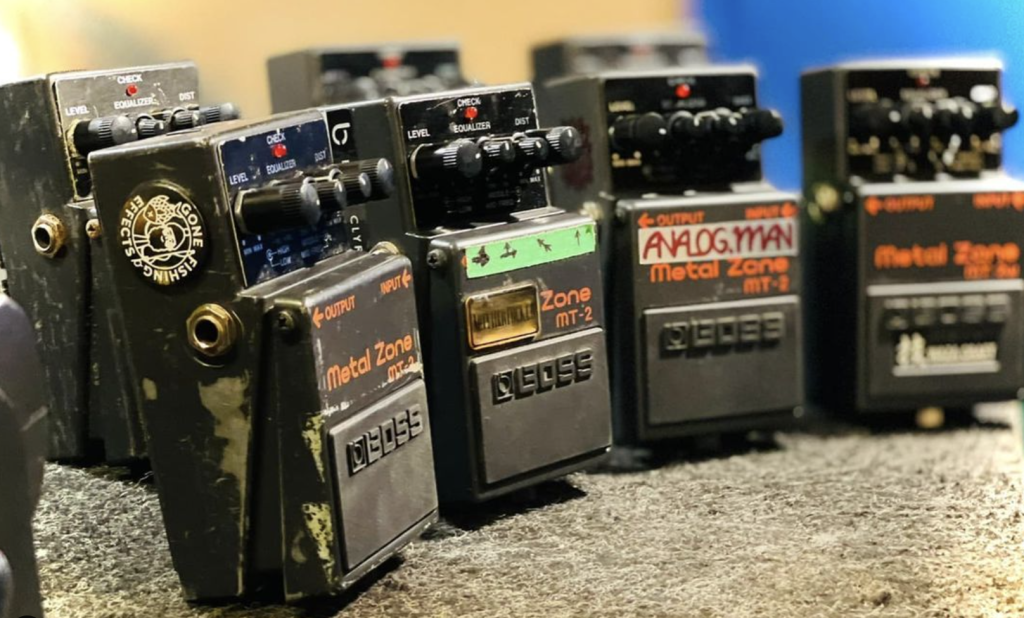
"The beauty of being in the studio is you can crank it. It can sound incredible cranking things up, which you would never do at home or at a gig."
Playing Favorites
What’s your favorite BOSS pedal of all time?
I would have to say the Metal Zone. There’s nothing like the low-end you can get from the Metal Zone when going through a big amp. That’s when it comes alive. It’s great. Simon Neil plays it through his Marshall 1959 Plexi amp, which is set super clean.
Would you like to see any BOSS classics return?
I’d like to see the TU-2 Chromatic Tuner return. I only use TU-2s on stage for Si because he prefers the way the lights look. I’m not knocking the TU-3, though. That’s what I have in my toolbox.
"We often find songs end up sounding a bit cleaner on recordings than they do live."
Job Done
What are some of your favorite BOSS pedal moments on record?
I love the DS-1 Distortion sound on early Nirvana stuff. And it covers up a lot of sins in my playing. We used BOSS pedals on pretty much everything Biffy Clyro recorded. We used the SD-1 Super OverDrive for a medium distortion sound on tracks like “Who’s Got a Match?” from the Puzzle album. It doesn’t have to be full-on all the time, and we often find songs end up sounding a bit cleaner on recordings than they do live.
Which three pedals would you pick for your desert island BOSS pedalboard and why?
I would have to start with the TU-3 Chromatic Tuner. You can’t do anything without your tuner. From there, I’d go into a Metal Zone, then a DD-6 Digital Delay. Job done. You can get a lot of different sounds out of the Metal Zone. And the DD-6 does a lot, too. I like using the short delay mode for a cool slapback sound.
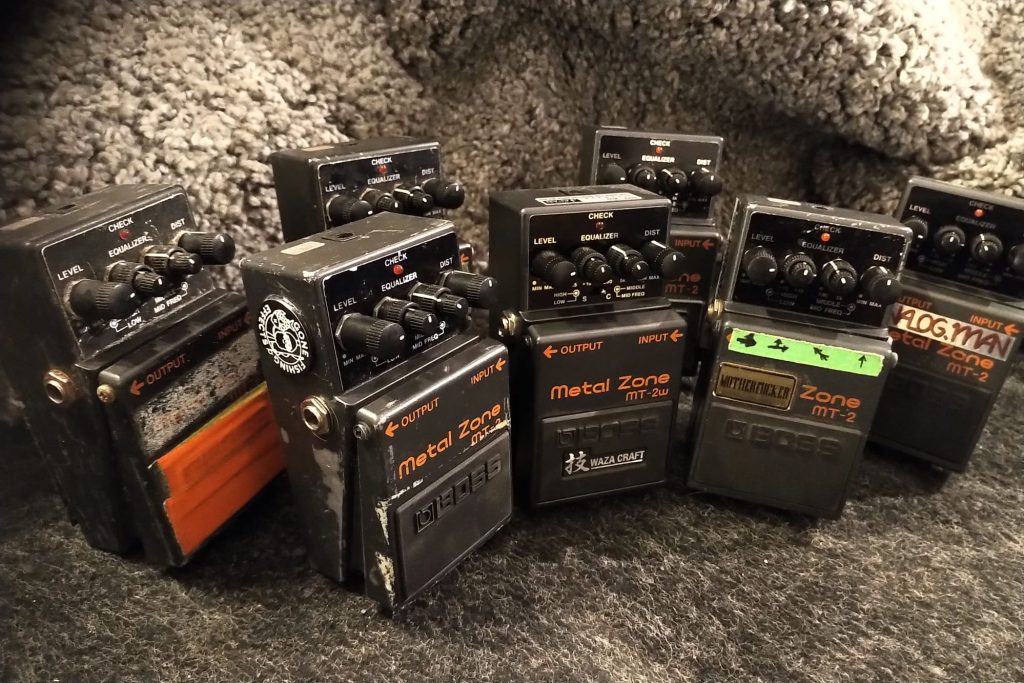
"Pick a cool sound, and don’t mess with it too much. Keep it as simple as possible."
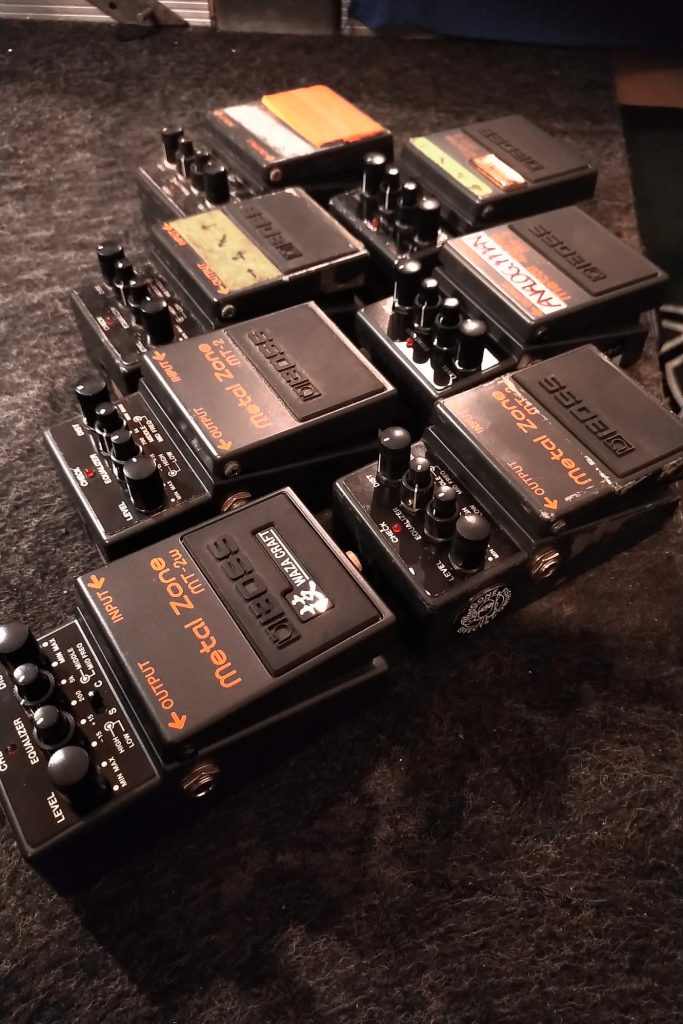
Delayed Gains
Do you have any tips on using gain pedals?
Pick a cool sound, and don’t mess with it too much. Keep it as simple as possible. Do you need to download thousands of different sounds for an amp modeler? Why not just plug a BOSS pedal into an actual amp and enjoy it? The way you play will make your rig sound cool.
There are so many other variables aside from just the pedal and amp. For example, a guitar pick can change your sound dramatically. Strings can change your sound a lot, too. It’s too easy to get bogged down in certain details without seeing the bigger picture. Some people go too far into the minutiae. But take a step back and ask yourself: does it sound cool or not?
Any tips on using delay pedals?
Mike Vennart gave me a great tip. Set up a digital delay with the right amount of repeats, level, and length, then run that into an analog delay. You can get some interesting sounds where the decays sound messed up in a really cool way. So, try going digital into analog. The sounds you can get are off the chart. It’s Mike’s secret weapon.
"If you’re going to use reverb, then go big and have fun with it, I say. Make it a big, bold statement."
Mistakes, Myths, and Views
Do you have any tips on using reverb pedals?
Reverb can be a tricky one to use live. If you’re playing in a big room, there’s normally plenty of natural reverb anyway. But if you’re going to use it, then go big and have fun with it, I say. Make it a big, bold statement. I think that’s much, much cooler. I particularly love combining reverb with fuzz.
Have you noticed any common mistakes or myths about pedalboards?
True bypass isn’t always the best choice. It can be in some circumstances and not in others. There are also misconceptions about through-hole soldering being better than surface-mount PCB designs. It doesn’t make a jot of difference to what you can actually hear, in my opinion. If anything, surface mount produces better component tolerances, meaning it’s more consistent.

"When I’m older, the dream is to be sitting in my shed building effects pedals."
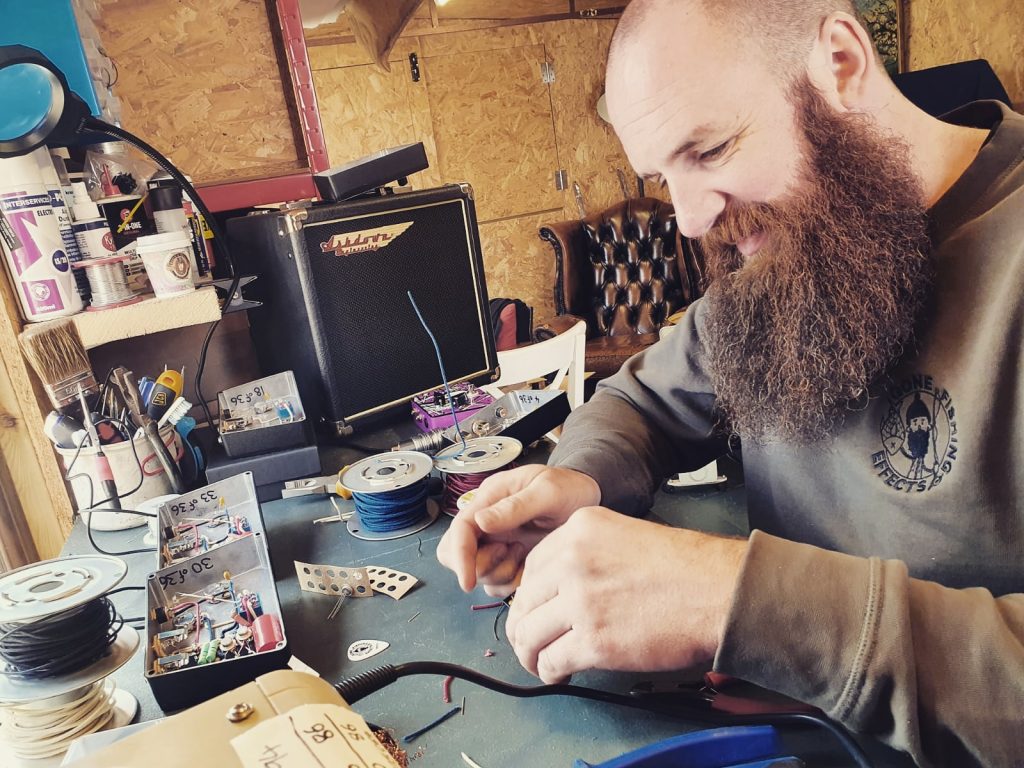
Gone Fishing
What is your overall view on the current state of the effects pedal market?
I’ll let you know when I put out my next pedal. Every time I release a Biffy Clyro pedal, it sells out in about three minutes. I literally can’t make enough of them. When I’m older, the dream is to be sitting in my shed building effects pedals.




